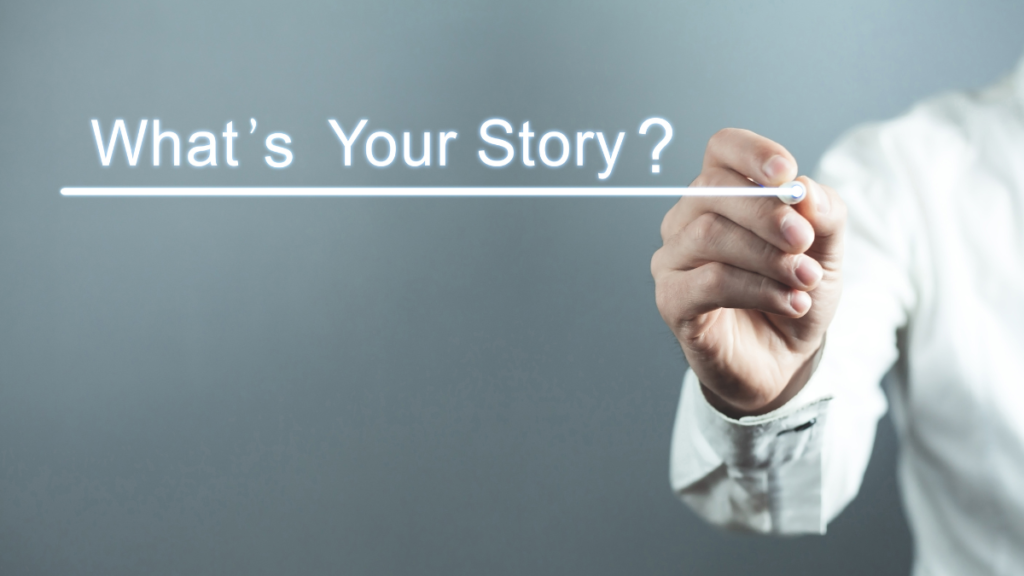Imagine this: A founder spends years perfecting their product. It’s got all the bells and whistles—sleek design, powerful features, maybe even a competitive price. They launch with confidence, expecting sales to roll in.
But nothing happens.
They run ads. They blast emails. They post on social media. Still, crickets.
Frustration sets in. The product is good—maybe even better than what competitors offer—so why isn’t anyone buying?
Here’s the hard truth: No one cares. Not about the features, the pricing, or the tech behind it. People don’t buy based on logic alone. They buy what moves them.
And that’s where most businesses go wrong. They focus on what they’re selling instead of why people should care. The difference? Storytelling.
The Harsh Truth: No One Cares About Features
Think about the last time you made a purchase—not out of necessity, but because you wanted something. Maybe it was a premium coffee brand, a high-end gadget, or even a subscription to a service you didn’t technically need.
Now ask yourself: Did you buy it because of its specs, or because of how it made you feel?
Most businesses assume customers make decisions based on logic. They fill their marketing with feature lists, industry jargon, and technical comparisons, hoping to “convince” people. But the truth is, no one wakes up thinking about product features.
They buy based on emotions.
Take luxury watches. No one spends thousands of dollars on a Rolex because they need to check the time. A $20 watch does the same job. What they’re really buying is status, craftsmanship, and a legacy that means something.
Or look at Tesla. People don’t buy it just because it’s an electric car. They buy it because it represents the future, innovation, and a statement about who they are.
Your product might be great, but if it’s just a list of features, it’s forgettable. If you want people to care, you need to give them a reason beyond logic.
The Power of Story: Why Some Brands Win Without the Best Product
The best product doesn’t always win. The best story does.
Think about Apple. Their MacBooks aren’t the most powerful computers on the market. Their iPhones often lag behind competitors in raw specs. And yet, Apple dominates. Why? Because they don’t sell products—they sell a belief. Think different. When you buy an Apple product, you’re not just getting a device. You’re joining a movement.
Nike? Same thing. It’s not about the shoes. It’s about pushing past limits, being the underdog, proving yourself. Just do it. That’s a story people want to be part of.
And Tesla? Sure, they build electric cars. But what they really sell is a vision of the future. They make customers feel like pioneers—part of something bigger than just driving a vehicle.
These brands understand something most businesses miss: People don’t buy products. They buy identities, aspirations, and emotions. If your brand’s story is strong enough, people will choose you—even if a competitor has a technically “better” offering.
What’s Missing? Your Story is Boring (or Nonexistent)

Most businesses don’t have a product problem. They have a story problem.
There are three big mistakes that kill a brand’s ability to connect:
- Too much focus on features – No one gets excited about “industry-leading AI-powered automation” or “seamless integration.” That’s brochure talk. If your message sounds like something a competitor could copy and paste, it’s forgettable.
- No emotional pull – If your brand doesn’t spark a reaction, it won’t stick. People remember the brands that make them feel something—excitement, nostalgia, ambition, or even outrage. The best stories trigger emotion, not just interest.
- Invisibility – If no one remembers your brand’s story, you don’t have one. A great story is repeatable. It spreads. If your customers can’t sum up what you stand for in a single sentence, you’re blending into the noise.
The brands that win don’t just tell customers what they sell. They show them why it matters in a way that sticks.
How to Tell a Story That Makes People Care
Good stories don’t just entertain. They transform the way people see themselves. If you want your brand to matter, you need to move beyond selling a product and start crafting a story that resonates. Here’s how:
- Make the customer the hero – Your brand isn’t the main character; they are. Apple doesn’t sell computers; they empower creators. Nike doesn’t sell shoes; they inspire athletes. Where does your customer fit into your story?
- Shift the focus from product to transformation – What changes in their life because of you? A skincare brand isn’t selling moisturizer; it’s selling confidence. A fitness app isn’t selling workouts; it’s selling the feeling of achievement. Sell the result, not the tool.
- Use contrast and stakes – Great stories show a clear “before” and “after.” What pain, frustration, or desire does your customer have before they find you? What’s possible after? The sharper the contrast, the stronger the pull.
- Speak in human language – If your messaging sounds like a corporate press release, you’ve already lost. Drop the robotic marketing speak and talk like a real person.
A great story makes your brand unforgettable. If people see themselves in what you’re selling, they don’t need to be convinced—they’ll want to be part of it.
The One-Question Test: Would Someone Retell Your Story?
People don’t repeat product descriptions. They repeat stories.
No one sits at dinner saying, “I just bought a new phone with a 6.7-inch OLED display and an A17 Bionic chip.” That’s forgettable. But they will say, “This phone’s camera is so good it makes my photos look professional.” That’s a story.
Why do people rave about Airbnbs they’ve stayed at but rarely mention a standard hotel? Because one is an experience, the other is just a transaction. One has a personal, memorable story attached to it. The other? Just a bed for the night.
If your brand’s story isn’t something people naturally pass along, it won’t spread. The real test is simple:
Would someone tell a friend about you—without you asking them to?
If the answer is no, your story needs work.
Final Thought: Your Product Might Be Great, But Without a Story, It’s Invisible
The best product doesn’t always win. The best story does.
You can have the most advanced technology, the highest-quality materials, or the best pricing in the market. But if people don’t feel something when they hear about your brand, they’ll forget you.
Storytelling isn’t just marketing—it’s what makes people care. It’s what turns a business into a movement, a product into a must-have, and a customer into a lifelong advocate.
So, stop pushing features. Stop trying to “convince” people. Instead, tell a story worth remembering. The brands that do? They don’t just get customers. They build a following.




